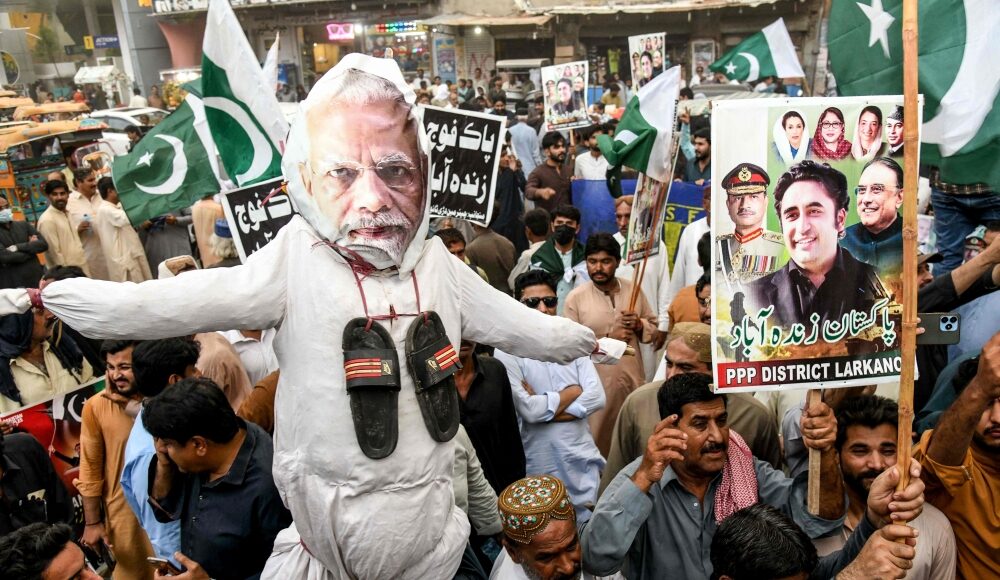MAY 9 — When nuclear-armed India and Pakistan lurch toward conflict, the world holds its breath — not because war between them is unprecedented, but because the escalation could quickly spiral out of control. The recent series of tit-for-tat military actions, missile exchanges, and aerial combat has brought the region once again to the brink.
Yet while global attention focuses on Kashmir and the Line of Control, South-east Asia particularly Asean — sits exposed on another frontline: economic shockwaves, diplomatic fragmentation, and regional instability.
Under Offensive Realism — a theory advanced by John Mearsheimer — this kind of escalation is not only dangerous, but inevitable. In an anarchic international UK system where no higher authority exists to enforce peace, states must pursue power to ensure survival.
This compulsion generates strategic environments where mistrust, arms races, and preemptive actions are rational acts, not accidents. The India-Pakistan conflict perfectly reflects this grim logic. Asean, though geographically distant, is firmly in the path of its consequences.
India sees Pakistan as a destabilising force exporting terrorism across the LoC, while Pakistan perceives India’s conventional and nuclear growth as an existential threat. Both interpret defensive measures as offensive.
Pakistan Peoples Party (PPP) activists hold an effigy of India’s Prime Minister Narendra Modi during an anti-India protest in Larkana, Sindh province, on May 8, 2025. — AFP pic
From the perspective of offensive realism, this is a textbook security dilemma — one side’s efforts to enhance its security only deepen the other’s sense of vulnerability.
India’s Rafale jets and satellite-guided missiles are balanced by Pakistan’s strategic partnership with China and deployment of tactical nuclear systems. Restraint erodes. Each encounter becomes a test of resolve, and diplomacy takes a back seat to survival instincts.
What raises the stakes further is India’s suspension of the Indus Waters Treaty’s hydrological data-sharing mechanism.
Signed in 1960 under World Bank auspices, the treaty governed the use of six rivers shared by the two countries.
While India controlled the eastern rivers, Pakistan received guaranteed access to the western rivers. Crucially, both sides agreed to exchange daily river flow data, particularly during flood seasons, to prevent disaster and miscalculation.
With India’s suspension of this practice in early 2025 following terror attacks in Kashmir, the treaty’s cooperative core has fractured.
This is not merely symbolic — it turns hydrology into a weapon. Without upstream data, Pakistan cannot prepare for floods or droughts.
Sudden releases or infrastructure changes upstream could overwhelm Pakistan’s farmlands or hydroelectric dams without warning. Water, once a shared resource, becomes a coercive tool.
From an offensive realist standpoint, this is expected. Treaties and institutions are useful only as instruments of power.
When strategic interests shift, even durable agreements like the Indus Waters
For Asean, this is a warning: when realpolitik overrides mutual survival, no region is immune from its fallout.
Asean, which prides itself on centrality, neutrality, and convening power, is unprepared for the strategic shockwaves now emanating from South Asia. The implications are far-reaching.
First, the militarisation of the Indian Ocean is disrupting global trade routes.
12 Indian naval activity around the Andaman and Nicobar Islands, alongside Pakistan’s maritime cooperation with China near Gwadar, has turned the ocean into a contested corridor.
Given that most Asean trade flows through this region, the risks of disruption are high.
With India tightening control through defence pacts like the Quad, and with China watching closely, any miscalculation threatens vital economic arteries for Indonesia, Malaysia, and Singapore.
Second, Asean’s diplomatic cohesion is at risk.
As Malaysia, Indonesia, and Brunei voice concern over humanitarian conditions in Kashmir, their moral positions may clash with members like Singapore and Vietnam that emphasise sovereignty and non-interference.
The India-Pakistan crisis now challenges Asean not just through external conflict, but internally — by highlighting divisions in values and priorities.
Third, the strategic contagion spreads beyond South Asia. North Korea is watching. If two nuclear powers can engage militarily without triggering global intervention, why should Pyongyang refrain from tactical provocations?
The normalisation of brinkmanship emboldens hardliners, destabilising North-east Asia. Asean’s voice in regional forums like the East Asia Summit may be weakened if it fails to respond or adapt to this shifting norm.
Fourth, Asean’s role as a mediator is being eroded. Malaysia’s proposal for third-party mediation — anchored in both Asean’s Charter and Chapter VIII of the UN Charter — is rejected outright by India.
Offensive realism explains this reaction: mediation is a constraint, and constraints are liabilities when power maximisation is the goal.
If such diplomatic outreach is dismissed, Asean’s credibility as a platform for peacebuilding may fade.
Fifth, the region’s economic resilience is under fresh strain.
Already grappling with the economic impact of Trump II-era tariffs, CHIPS Act restrictions, and global energy market instability, Asean is vulnerable to external shocks.
An extended India-Pakistan crisis that disrupts airspace, supply chains, or maritime trade could cut 1 to 1.5 percentage points from Asean growth. Indonesia’s first-quarter figures are already underperforming, and Malaysia’s semiconductor exports remain exposed to global delays.
What, then, should Asean do ?
First, Asean must move beyond its default diplomatic inertia. It must establish a South Asia Watch Unit under either the Asean Regional Forum or East Asia Summit.
This body must be equipped for early warning, strategic outreach, and preventive diplomacy. It cannot be symbolic — it must be staffed, funded, and empowered.
Second, Asean should improve maritime coordination among littoral states. Joint patrols and regional information centers are essential to deconflict naval activity and safeguard trade.
China is already deeply worried that its energy supplies from the Middle East could be intercepted or delayed if India suspects Beijing of siding more aggressively with Islamabad. Asean must ensure it does not get caught in this crossfire.
Third, Asean needs to double down on its internal integration. Economic interdependence, food security, and regional supply chains must be strengthened to shield the region from instability in external corridors like the Indian Ocean.
While not a direct response to the India-Pakistan conflict, these measures will insulate Asean against the cascading effects of power contests beyond its borders.
Finally, Asean must use its moral capital and convening strength to urge the revival of the hydrological data-sharing clause of the Indus Waters Treaty. It is not about intervening in Kashmir.
It is about preventing environmental and humanitarian catastrophe. The suspension of data exchange turns water into a potential weapon of mass disruption.
Any ecological collapse in South Asia would spill over into global climate diplomacy, raise food prices, and create migratory pressures — including toward South-east Asia.
Offensive realism does not offer comfort — it offers clarity.
In a world where rising and established powers seek dominance as the highest good, Asean cannot afford passivity.
It must choose strategic activism over strategic silence. South Asia’s descent into conflict is not a distant drama. It is a regional earthquake whose tremors are already reaching Asean’s shores.
If Asean wishes to defend peace, prosperity, and its own centrality, it must act with the same urgency that others pursue dominance.
Regional neutrality must not become regional irrelevance. Peace must be defended — not just hoped for.
* Phar Kim Beng is a professor of Asean Studies, International Islamic University Malaysia (IIUM).
** This is the personal opinion of the writer or publication and does not necessarily represent the views of Malay Mail.





